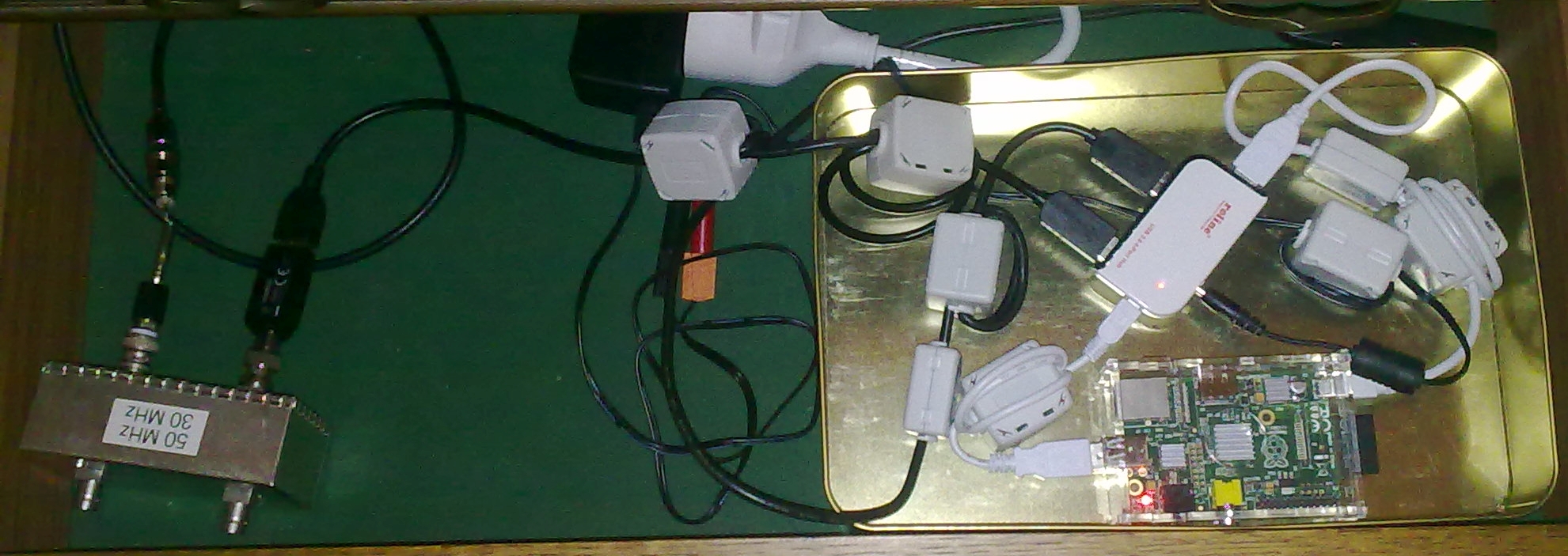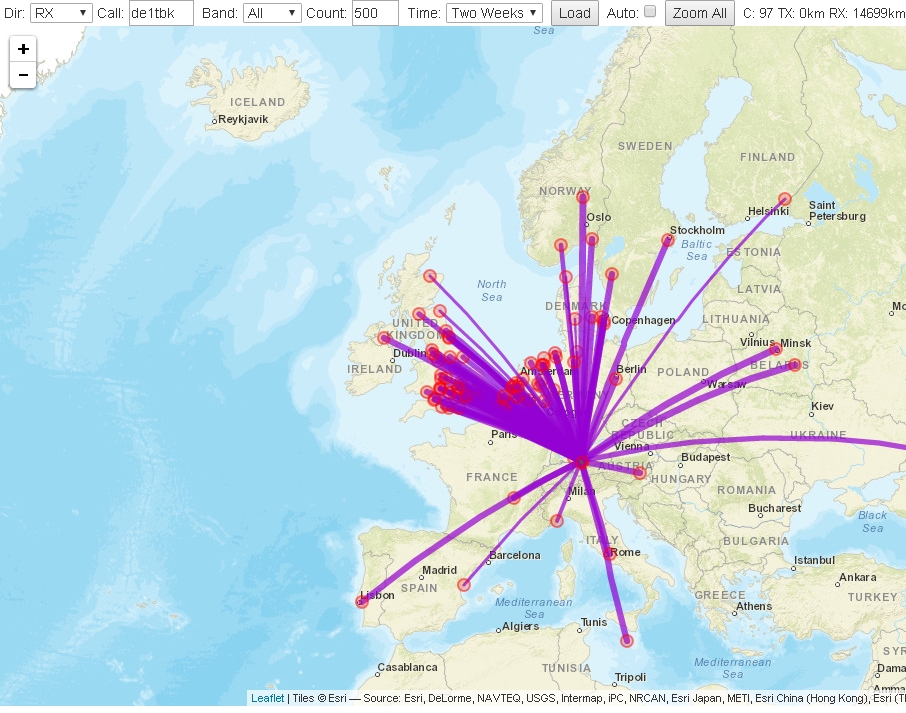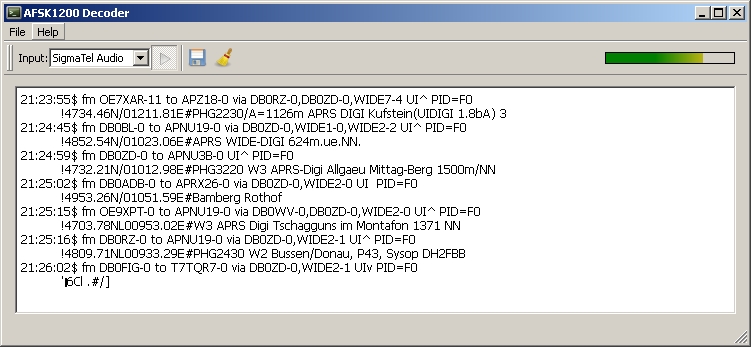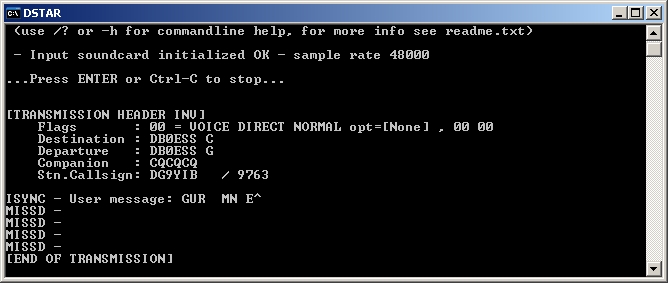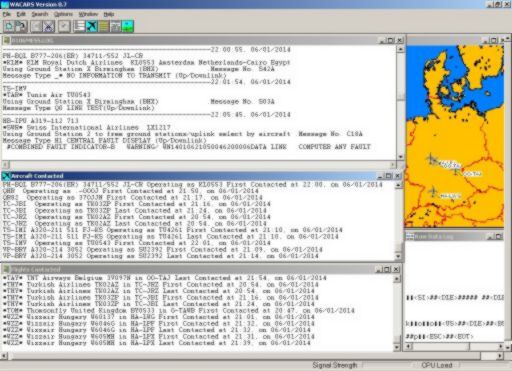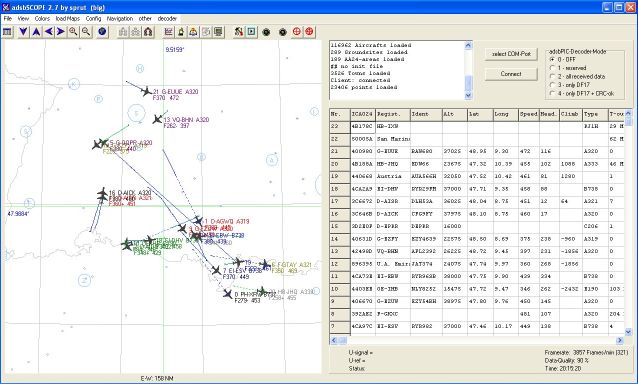Frequency range: 22 - 1100 MHz (Tuner Fitipower FC0013)
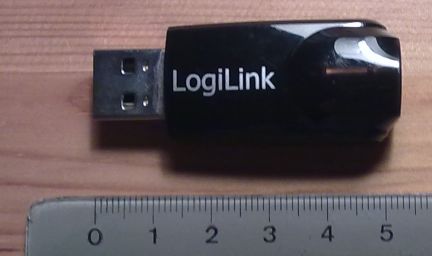
USB 2.0 interface with 1 m extension cable to the DVB-T dongle
Windows XP Professional Service Pack 3
SDR package
which I can recommend if you run the SDR package on a rather old single-core PC hardware
It offers built-in demodulators for
- AM (Amplitude Modulation) ⇒ used in short-wave broadcasting and air traffic
- NFM (Narrowband Frequency Modulation) ⇒ used in short-range communication and VHF ham bands
The bandwidth can be adjusted for further demodulation with separate digital-mode packages
- WFM (Stereo Wideband Frequency modulation) ⇒ used in broadcasting
A decoder for RDS (Radio Data System) is included
- DSB / LSB / USB (Double- / Single-Side-Band Modulation) ⇒ used on amateur radio short-wave bands
The bandwidth can be adjusted for narrow Morse Code (CW) transmissions
SDR package
for decoding of aircraft transponder signals on 1090 MHz, see below
for visualization of the received and decoded aircraft transponder signals
Used by amateur radio hams for packet radio,
APRS (Automatic Packet Reporting System) and telemetry.
Due to the propriery codec, so far only the the header of the messages can be decoded.
But this is sufficient to see
- Who is calling CQ ?
- Who are the QSO partners ?
- Is there any activity at all on my local DSTAR repeater ?
(i.e. "Does it make sense to buy a DSTAR equipment ?")
- Radio Teletype (various RTTY modes)
- Phase Shift keying (various PSK modes)
- various multi-carrier modes (such as Olivia, Contestia, Throb, Thor, MT63,...)
- WeatherFAX (various Weather FAX modes) ⇒ used by maritime weather services
When the pager services where shut-down, Amateurs used the surplus hardware and modified it for the 70 cm ham band.
In Germany 439.9875 MHz is used for POCSAG in ham radio.
